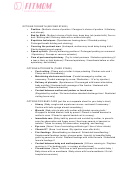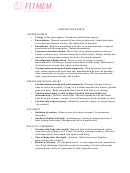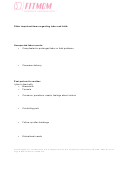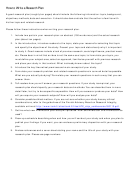How To Prepare A Birth Plan
ADVERTISEMENT
HOW TO PREPARE A BIRTH PLAN
1. Your Birth Plan is a kind of letter to the nurses, doctors or midwives whom you may not
know very well. It tells them your preferences and priorities for the care they give you
and your baby during and after your childbirth.
2. Use the list below as a guide to the options to consider. Don’t feel you must make a
choice on every option. Of course, you want to be flexible since no one knows if
problems might arise. Language like, “If possible…”, “unless medically necessary…”, “I
prefer”, indicates to the staff that you recognize that a change in plans is sometimes
necessary. By including in your plan the options you prefer if the “unexpected” should
occur, you will remain actively involved in your care.
3. Your childbirth educator, your doula, and the nurse on the hospital tour can give you
helpful information on policies and routines of your care provider and your hospital.
4. Keep your plan friendly and concise (approx 2-3 pages). If possible, prepare a draft,
discuss it with your care provider and then make up a final copy that can become a part
of your chart. Take one or two extra copies with you, in case it is misplaced.
5. Begin with your names and a brief introduction about yourselves. Its purpose is to help
the staff become better acquainted with you and to understand your birth plan better.
Your general health, any problems during pregnancy, and special needs should be
described in your introduction.
OPTIONS TO CONSIDER FOR YOUR BIRTH
OPTIONS DURING LABOR (FIRST STAGE)
Presence of partner/others (Partner only / A doula for emotional support,
•
reassurance and physical comfort / Limit on number of support people / Other
children at birth / At doctor’s, nurse’s, anesthesiologists’ discretion)
Enema (No enema / Self-Administered / Given by nurse)
•
Vaginal exams (At mother’s request / As few as possible with ruptured membranes /
•
Only when labor changes or a clinical decision has to be made / Occasionally /
Frequently)
Speeding Labor (Walk, change positions / Nipple stimulation / Enema / Artificial
•
rupture of membranes / Pitocin)
Position for labor (Freedom to change positions and walk around / Confined to bed
•
(connected to lines))
To empty bladder (Walk to toilet / Portable toilet by the bedside / Bed pan in bed /
•
Catheterization)
Onset of labor (Spontaneous (begins on its own) / Induction of labor)
•
Rupture of membranes (Spontaneous / Artificial)
•
Monitoring fetal heart rate (Auscultation with stethoscope / Auscultation with
•
Doppler (ultrasound stethoscope) / Intermittent external electronic fetal monitoring /
Routine continuous electronic monitoring - internal or external)
Food/Fluids (Eat and drink as desired / Water, juice, popsicles / Ice chips only / IV
•
fluids / Heparin or saline lock in case IV fluids needed)
Pain relief (Emotional support from partners(s), doula and staff / Relaxation,
•
breathing, comfort measures / Bath, whirlpool, or shower / Medications, anesthesia
only at mother’s request / Medications and/or anesthesia encouraged by medical
staff)
ADVERTISEMENT
0 votes
Related Articles
Related forms
Related Categories
Parent category: Medical
 1
1 2
2 3
3 4
4 5
5








